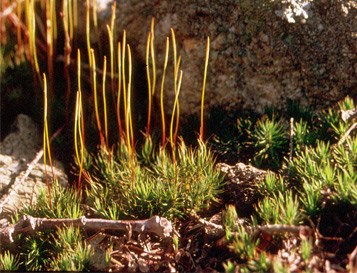
Mosses and liverworts occur in a variety of habitats throughout Shenandoah National Park. These non-vascular plants (bryophytes) lack well developed water conducting tissue and tend to be most abundant in moist areas, such as the splash zones of a waterfalls, or in the higher elevation forests that are frequently enveloped in fog. Mosses and liverworts contain photosynthetic pigments and, like more advanced plants, produce their own food from sunlight. Mosses typically have small leaves arranged in a whorl around a short stem. Liverworts are closely related to mosses, but can usually be recognized by their larger flattened leaves that grow in two rows. Related Information Crum, H.A. and L.E.Anderson. 1981. Mosses of Eastern North America. Columbia University Press, New York, New York. |
Last updated: March 5, 2019
